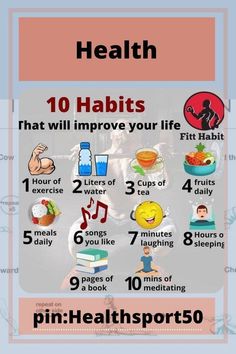The fitness world is rife with misinformation, leading many individuals to adopt ineffective or even harmful practices in their pursuit of health and wellness. As new trends and fads emerge, it’s essential to distinguish between fact and fiction. Here, we debunk five common fitness myths to help you make informed decisions on your fitness journey.
Myth 1: You Can Spot Reduce Fat
The Claim:
Many believe that targeting specific areas of the body with exercises will lead to fat loss in those areas, known as “spot reduction.” For example, doing countless crunches to lose belly fat.
The Truth:
Spot reduction is a myth. While you can strengthen and tone specific muscles through targeted exercises, fat loss occurs throughout the body as a result of creating a caloric deficit—burning more calories than you consume. Genetics, body composition, and overall lifestyle factors play significant roles in where you lose fat first.
What to Do:
Instead of focusing on spot reduction, aim for a well-rounded fitness routine that includes cardiovascular exercises, strength training, and a balanced diet. This holistic approach will help you lose fat from all areas of your body over time.
Myth 2: Lifting Weights Makes You Bulky
The Claim:
Many women, in particular, fear that lifting weights will lead to a bulky physique, preferring to stick to lighter weights or cardio instead.
The Truth:
While weightlifting can increase muscle mass, it does not automatically result in a bulky appearance. Muscle gain is influenced by various factors, including genetics, diet, and overall workout routine. Women, due to lower testosterone levels, are less likely to develop large muscles compared to men.
What to Do:
Incorporate strength training into your routine to build lean muscle, improve metabolism, and enhance overall body composition. Focus on different rep ranges and weights to find what works best for your body and goals.
Myth 3: You Need to Work Out Every Day
The Claim:
There’s a common belief that you must work out every day to see results and maintain fitness levels.
The Truth:
Rest and recovery are crucial components of a successful fitness routine. Overtraining can lead to burnout, fatigue, and increased risk of injury. Your muscles need time to recover and grow stronger after workouts.
What to Do:
Aim for a balanced routine that includes rest days. Depending on your fitness level, this might mean working out three to five times a week, incorporating active recovery days with light activities like walking, yoga, or stretching.
Myth 4: Cardio is the Best Way to Lose Weight
The Claim:
Many people believe that spending hours doing cardio is the most effective way to lose weight and improve fitness.
The Truth:
While cardio is an essential component of a well-rounded fitness program, it’s not the only way to lose weight. Strength training plays a crucial role in building muscle, which increases your resting metabolic rate, helping you burn more calories at rest. Additionally, intense workouts, such as HIIT (High-Intensity Interval Training), can be more effective for fat loss in a shorter amount of time.
What to Do:
Incorporate a mix of cardiovascular exercise and strength training into your routine. Focus on both low-intensity steady-state cardio and high-intensity workouts to optimize fat loss and improve overall fitness.
Myth 5: You Have to Eat Protein Immediately After Working Out
The Claim:
Some fitness enthusiasts believe that you must consume protein right after a workout to maximize muscle recovery and growth.
The Truth:
While protein is essential for recovery, the so-called “anabolic window”—the idea that you have a limited time post-workout to consume protein—is overstated. Research suggests that the total daily intake of protein is far more important than the timing of consumption.
What to Do:
Aim to consume a balanced meal containing protein, carbohydrates, and healthy fats within a few hours of your workout. This will provide your body with the necessary nutrients for recovery and muscle growth without the pressure of immediate consumption.
Conclusion
Understanding the truth behind these common fitness myths can help you make informed decisions about your workout routines and nutrition. By focusing on a balanced approach that includes strength training, proper recovery, and a nutritious diet, you can achieve your fitness goals more effectively. Remember, fitness is a personal journey—what works for one person may not work for another, so always listen to your body and prioritize sustainable practices over quick fixes.
